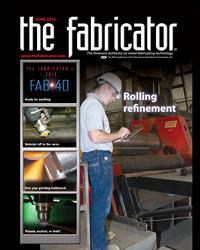Senior Editor
- FMA
- The Fabricator
- FABTECH
- Canadian Metalworking
Categories
- Additive Manufacturing
- Aluminum Welding
- Arc Welding
- Assembly and Joining
- Automation and Robotics
- Bending and Forming
- Consumables
- Cutting and Weld Prep
- Electric Vehicles
- En Español
- Finishing
- Hydroforming
- Laser Cutting
- Laser Welding
- Machining
- Manufacturing Software
- Materials Handling
- Metals/Materials
- Oxyfuel Cutting
- Plasma Cutting
- Power Tools
- Punching and Other Holemaking
- Roll Forming
- Safety
- Sawing
- Shearing
- Shop Management
- Testing and Measuring
- Tube and Pipe Fabrication
- Tube and Pipe Production
- Waterjet Cutting
Industry Directory
Webcasts
Podcasts
FAB 40
Advertise
Subscribe
Account Login
Search
Moving forward
Small metal fabricator, big business strategy
- By Tim Heston
- June 3, 2013
- Article
- Shop Management
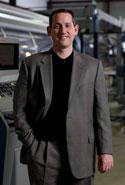
Figure 1: Troy Berg and his wife Michelle purchased Dane Manufacturing in November 2001; its revenue then was about $1.2 million. This year the company is expected to grow past $10 million in sales.
Troy Berg attends equipment auctions not just to find machinery but to learn about the company—what went right and what went wrong. With success comes confidence, but with failure comes soul-searching, self-scrutiny, and, quite often, unfiltered truth.
In 2007 he visited an Oregon contract fabricator that held an auction in an idle portion of its shop full of lightly used, high-quality laser cutting machines, press brakes, and high-end material handling systems. The other half of the floor was still humming. Punch presses, lasers, and the buzz of welding arcs permeated the place.
Berg didn’t buy anything, but he did see a man in a blue maintenance shirt. He walked over and introduced himself. They started chatting. Like a true investigative reporter, Berg knew that front-line people like this could be a good source for unfiltered information. So he asked the question: “What the heck happened here?”
He learned that the side that was humming was in contract fabrication. Its diverse mix of relatively small contracts kept people employed and the shop floor busy. The idle side, where equipment was being auctioned off, was a value stream dedicated to electronics chassis work for one customer that happened to move its supply chain to China and Mexico.
This, Berg said, was one of many experiences depicting the same thing: A shop that relied too heavily on one revenue stream was, in a sense, fabricating on thin ice. It came back to diversification, both of customers and markets, and managing risk, which is why slow growth has been the modus operandi for many owners of small fab shops.
When Berg and his wife Michelle acquired Dane Manufacturing in November 2001 (see Figure 1), the couple knew they were buying into an old-school, third-generation family business. Launched eight decades ago in rural Dane, Wis., north of Madison, the company at the time was primarily a stamping operation. It employed a dozen people and had revenues of more than $1.2 million. This year the Bergs expect Dane, now a 50-employee enterprise, to surpass $10 million in sales.
Well, so much for slow growth.
Progressively Small
Small shops—indeed, small companies in general—remain this country’s primary employment engine, and Berg cited Census data attesting to this fact. “About 95 percent of Americans work for companies that employ fewer than 50 people, and about 97 percent of the American workforce are employed by companies of fewer than 100 people. That’s as true today as when we purchased Dane. At the time it had a stable group of about 20 customers. It wasn’t shrinking, but it wasn’t growing significantly either.”
Berg described Dane as a typical mom-and-pop, a term he doesn’t particularly like because of its sometimes derogatory connotation in modern usage, implying a slow-moving firm with out-of-touch, head-in-the-sand leadership.
According to Berg, this doesn’t describe Dane or, for that matter, many other successful small businesses. The nature of change in business hinges on how owners perceive risk. Many owners feel it’s risky to grow too big too quickly, in part because it involves a loss of control and they need to delegate more. Sometimes they don’t want to become too dependent upon several large accounts.
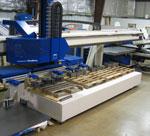
Figure 2: In 2001 Dane Manufacturing was primarily a stamping operation. Now the company mainly is a high-mix, low-volume fabricator.
The last especially is a valid concern, considering what Berg has witnessed at equipment auctions. The one-big-customer (or the few-big-customers) conundrum is the albatross of the contract manufacturing arena. In the 2012 Financial Ratios & Operational Benchmarking Survey from the Fabricators & Manufacturers Association International, a quarter of respondents said that 80 percent of shop revenue came from five or fewer customers.
A large plant, which may have been a community’s employment anchor for decades, makes headlines when it closes and moves production overseas. But say a large OEM brings additional fabrication processes in-house or moves a portion of its supply chain to another part of the country. Or the OEM may pare down the supply chain and use fewer suppliers. This may displace hundreds of workers at dozens of local fabricators and other contract manufacturers, but those layoffs usually don’t get noticed by national media or Wall Street. This, Berg said, makes regional boom and bust cycles especially painful, and they occur more frequently than the broader cycle of the U.S. economy.
It’s also why he has viewed sales diversification as essential for long-term survival. In 2002 Dane had a little more than $1.5 million in sales, manufacturing 500 part numbers for a customer base of 25 companies—and almost 40 percent of sales came from one account. Berg characterized it as low-product-mix, medium-volume work. In 2012 the company closed the books with well more than $9 million in sales. Most important, those revenue dollars came from an active customer base of 150 companies that provide 8,000 part numbers. The job mix makes the fabricator a truly high-mix, low-volume operation.
Berg points to a chart that effectively shows how the business has transformed during the past dozen years. The most obvious is process diversification. In 2002 about $776,000 came from stamping, the rest from low-volume fabrication processes (see Figures 2 and 3). By 2012 the stamping revenue dropped to $207,000, while almost $7 million came from fabrication. Another $2.3 million came from the company’s two product lines.
You Go Right, I Go Left
The product lines came from acquisitions of two small product-line manufacturers. In 2008 Dane purchased Rockford, Ill.-based Precision Fab. With about $1 million in sales, Precision Fab was a small division in a larger company that was looking to divest it. The division made tanks and reservoirs for use in mobile hydraulic systems, such as those used in mobile lifts. Then in November 2009 Dane purchased The Rockford Co., another Rockford firm that made the levelers that go underneath dishwashers and refrigerators.
The timing of these acquisitions, particularly the latest one, suggests that Dane grew even during the worst of times. But Dane didn’t make it through the recession unscathed. To the contrary, in 2009 Dane’s sales declined by 40 percent, and Berg laid off 13 people, a third of the workforce.
And this is when he bought a company?
“Yes, I’m probably a little bit nuts. I’m just a contrarian,” he said. “When everyone comes out of the movie theater and goes right, I go left. But the best time to buy a company is at the bottom of the business cycle. You can get the best price. And our bank was really good. They trusted me, and lent us the money.”
A fabricator can buy and sell equipment. It’s just business, adjusting capacity to meet changing demand levels. But if a business decision involves a workforce change—that is, layoffs—it’s different. “I’m sorry, but I can’t stand when people tell me, ‘Don’t take it personal, it’s just business,’ because it’s not.” Layoffs affect the company culture and change personal lives. It’s not a light decision.
The decision to buy Rockford Co. at the depths of the recession wasn’t made lightly, either, but at the time Berg perceived it to be the least risky path. It also helped achieve a top priority: It allowed him to rehire the workers he had to let go. “We care about our people and put a lot of money and training into them, and we don’t want to lose that,” he said. “The last thing I want to do is give those people up to a competitor, or to unemployment.”
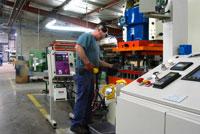
Figure 3: Dane still offers stamping, but the process no longer produces the lion’s share of company revenue.
Dane had to structure the deal unconventionally—this was 2009, after all. Berg borrowed money against inventory and accounts receivable, and then paid the owner the remainder of the purchase price (plus interest) with a down payment and several monthly payments thereafter. The last bit of financing came with the equipment. Dane had a good credit rating, so it was able to secure a loan after a down payment, but at 9 percent interest. “It was not a favorable interest rate, but it was only a two-year loan,” Berg said. “It got the deal done.”
Why go through the trouble, especially at the height of the credit crunch? What if the product line isn’t successful? What if the company acquisition meets unforeseen complications? Business media are full of stories—the most famous being AOL and Time Warner—about mismatched companies having a tougher time together than apart.
According to Berg, acquiring a company takes a lot of work and due diligence. And yes, putting a transaction through for two large firms—deals that happen to get the most attention—can entail such complexities (not to mention politics and power struggles) that they quickly go downhill and make news headlines. “These large companies can actually go backward and destroy value, not create value,” Berg said.
With smaller deals, such as Dane’s acquisitions of companies with between $1 million and $2 million in sales, the story changes. The hard work is still there, but the details can be much more manageable. Dane works on a contract basis with a CFO who has years of experience managing small and midsized manufacturers. When acquiring companies, Berg and the CFO create a financial model and projections. For instance, The Rockford Co. purchase gave Dane a foothold in a new market and further diversified the fabricator’s customer base.
In this bolt-on acquisition, Dane purchased some of the machinery and equipment, some of the talent, and all of the product lines, including the manufacturing know-how and customers that came with those product lines. Those products immediately gave the company assets that could take years to grow organically. It increased Dane’s diversity and, as Berg saw it, reduced the fabricator’s long-term risk. Ultimately, he felt this benefit outweighed the risk of short-term debt incurred by the transaction.
“That’s how we get one plus one to equal three,” Berg said. “It’s about synergy.” Yes, he conceded that “synergy” may seem like an overused buzzword. It’s a euphemism for eliminating duplicate costs, and that can cause some unpleasant realities for the company being acquired (which is also why Berg is careful to say that these transactions aren’t “just business”).
For these bolt-on transactions, Dane didn’t need to hire any more managers or deploy another cost accounting system. It didn’t need the real estate or additional shop floor space, because the acquired businesses moved to the Dane plant, more than 80 miles north of Rockford, Ill. A few people moved up to Wisconsin, but some just couldn’t move to a new location.
“The workforce in America is not as mobile as we like to think it is,” Berg said. “Families put their roots down in communities, and I’m not insensitive to what that looks like. It’s difficult.”
Immediately after The Rockford Co. purchase, though, the new business continued to go downward, with the appliance industry still reeling from the housing bust. Again, this was 2009 and early 2010. Many big players also had outsourced overseas. Berg conceded that, as the economy slowly emerged from the depths of the historic downturn, things looked pretty bleak. But by 2010, thanks in part to the acquisitions, revenues bounced back 63 percent. By 2011 company sales had grown to a record $7 million.
“Today the big players in the appliance business are figuring out that it’s not such a great idea to make stoves or refrigerators in China and bring them across the ocean,” Berg said. “The cost of [manufacturing in] China has gone up, and Dane has benefited from the reshoring trend.”
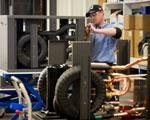
A worker at Dane assembles a geothermal heat pump, the company’s first product developed and launched in-house.
The leveler business has since rebounded. The shop now churns out 25 million levelers a year—all that value coming from just a portion of manufacturing space in Dane’s plant.
Luck and Overalls
Reflecting back, Berg said he realizes that the steps he took to expand quickly could have led him down the road to an auction. “There’s luck in business. And once you’ve acquired the company, you’ve got to do the work to serve your customers. You need to make sure the product goes out on time. As Thomas Edison once said, opportunity is missed by most people because it comes dressed in overalls and looks a lot like work.”
No fabricator can avoid demand fluctuations, be it in heavy equipment, mining, or any other sector. It’s the nature of contract manufacturing. “Customer business goes down,” Berg said, “because those customers are just in a sector that gets hammered.”
At Dane, customer demand ebbs and flows like anywhere else, Berg said, but the fabricator’s customer diversity lessens the impact. No one customer makes up more than 10 percent of company revenue, and managers consciously work to keep it that way.
Competitive price and topnotch quality get a fabricator to the table these days. If a customer leaves, quite often it’s because of late delivery, which is why Dane tries to keep its on-time delivery percentage very high, above 95 percent. The shop also has increased its capacity with new equipment and by adding a third shift.
The business may go up and down with the overall economy, but the impact isn’t dramatic if customers don’t leave. “A lot of our customers have stayed with us,” Berg said. “We’re not blowing customers out the back door as quickly as we add them in the front door.”
Perceiving Risk
Trained as a mechanical engineer, Berg spent 11 years in the automotive industry as a plant manager, then moved on to launch his own engineering design firm, called KADesign, which focused on design work in casting and injection molding. Services included product development, engineering design, and solid modeling. Starting from essentially nothing, the company grew serving mainly Wisconsin-based OEMs. After four years KADesign had six people and about $500,000 in annual sales.
This was fine, but manufacturing had gotten into Berg’s blood. He missed it. So when a broker called him about a business for sale north of Madison, he jumped at the chance. The process began in 2000, and by the end of 2001 the transaction went through, and change ensued—especially on the front end, where draftsmen were using basic 2-D CAD and drawing by hand.
At first Dane became a customer of KADesign, and the firm got its first taste of 3-D solid modeling. After a year KADesign was folded into Dane. This included all the CAD assets—the servers, computers, modeling software, and employees.
KADesign was in effect Dane’s first bolt-on, and Berg has managed the business through two more since then. “As we make those additional products, the additional contribution margin from having that additional volume, spread across the same amount of overhead, more dollars drop to the bottom line,” Berg said. “We’ve got a track record of being able to do that now, several times.”
It comes back to risk, and Berg concedes that risk is a matter of perception that depends on a businessperson’s age, personality, life situation, and goals. As Berg sees it now, globalization, modern technology, and stringent competition have changed the game.
He added that he doesn’t overleverage to the point where debt becomes a long-term burden. The company controls its debt to ensure that ideally—aside from extreme circumstances like the Great Recession—it can afford to maintain its head count during the trough of a business cycle. Indeed, a big factor in the 2009 acquisition was getting previously laid-off people back on the payroll.
At the same time, he hasn’t shied away from expansion opportunities. Recalling his experiences at auctions, he always enters an idle plant with a sense of humility. “The owners of these businesses probably did a lot of things right, and they did a few things wrong. The margin for error is small.”
If a business doesn’t progress and move forward, it’s standing still—and these days, that may be the riskiest move of all.
Launching a Product From the Ground Up
Dane Manufacturing has experience in contract and product-line manufacturing, but until recently it had yet to develop and build a proprietary product from the ground up. This is where a new sister company, Q Energy Systems LLC (www.qenergysystems.com) comes into play. The newly launched business produces geothermal heat pumps.
“The geothermal heat pump industry is an emerging market segment,” said Troy Berg, Dane’s president. “There are many competitors, and much of the industry consists of small companies. With the emerging nature of this business, we saw a window of opportunity.” The product line is being made in Dane’s current shop floor space.
So why make the move this year? “Yes, a lot of people would say that this is the wrong time for alternative energy products, now that the U.S. has discovered so much natural gas,” Berg said. “Tell that to the rural customer who is paying enormous fees for his propane tank rental fuel, or other areas of the country where natural gas pipelines are not available.”
About the Author

Tim Heston
2135 Point Blvd
Elgin, IL 60123
815-381-1314
Tim Heston, The Fabricator's senior editor, has covered the metal fabrication industry since 1998, starting his career at the American Welding Society's Welding Journal. Since then he has covered the full range of metal fabrication processes, from stamping, bending, and cutting to grinding and polishing. He joined The Fabricator's staff in October 2007.
subscribe now

The Fabricator is North America's leading magazine for the metal forming and fabricating industry. The magazine delivers the news, technical articles, and case histories that enable fabricators to do their jobs more efficiently. The Fabricator has served the industry since 1970.
start your free subscription- Stay connected from anywhere

Easily access valuable industry resources now with full access to the digital edition of The Fabricator.

Easily access valuable industry resources now with full access to the digital edition of The Welder.

Easily access valuable industry resources now with full access to the digital edition of The Tube and Pipe Journal.
- Podcasting
- Podcast:
- The Fabricator Podcast
- Published:
- 04/16/2024
- Running Time:
- 63:29
In this episode of The Fabricator Podcast, Caleb Chamberlain, co-founder and CEO of OSH Cut, discusses his company’s...
- Trending Articles
AI, machine learning, and the future of metal fabrication

Employee ownership: The best way to ensure engagement

Steel industry reacts to Nucor’s new weekly published HRC price

Dynamic Metal blossoms with each passing year

Metal fabrication management: A guide for new supervisors

- Industry Events
16th Annual Safety Conference
- April 30 - May 1, 2024
- Elgin,
Pipe and Tube Conference
- May 21 - 22, 2024
- Omaha, NE
World-Class Roll Forming Workshop
- June 5 - 6, 2024
- Louisville, KY
Advanced Laser Application Workshop
- June 25 - 27, 2024
- Novi, MI
























